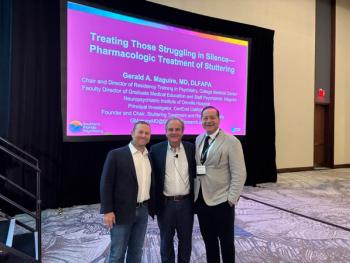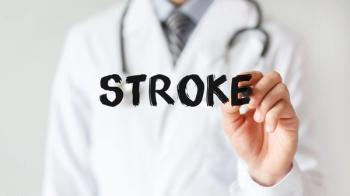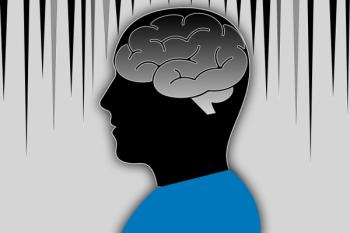
- Vol 42, Issue 3
Post-Acute Sequelae of COVID-19 Infection Presenting With Neuropsychiatric Symptoms: Diagnosis and Management
Key Takeaways
- PASC is characterized by diverse neuropsychiatric symptoms, with immune dysfunction being a key pathophysiological mechanism.
- Management of PASC involves pharmacologic interventions, multidisciplinary care, and integrative approaches like mind-body therapies.
In this CME article, learn more about the common neuropsychiatric sequelae of post-acute sequelae of COVID-19, the underlying neurobiological mechanisms, and evidence-based treatments and interventions.
CATEGORY 1 CME
Premiere Date: March 20, 2025
Expiration Date: September 20, 2026
This activity offers CE credits for:
1. Physicians (CME)
2. Other
All other clinicians either will receive a CME Attendance Certificate or may choose any of the types of CE credit being offered.
ACTIVITY GOAL
To present an introductory review of the neuropsychiatric symptoms of long-COVID or post-acute sequelae of COVID-19 (PASC) and describe a framework intervention approach.
LEARNING OBJECTIVES
1. Identify the common neuropsychiatric sequelae of post-acute sequelae of COVID-19 (PASC) and understand the underlying neurobiological mechanisms.
2. Discuss the evidence-based treatments and interventions for PASC’s neuropsychiatric symptoms.
TARGET AUDIENCE
This accredited continuing education (CE) activity is intended for psychiatrists, psychologists, primary care physicians, physician assistants, nurse practitioners, and other health care professionals who seek to improve their care for patients with mental health disorders associated with PASC.
ACCREDITATION/CREDIT DESIGNATION/FINANCIAL SUPPORT
This activity has been planned and implemented in accordance with the accreditation requirements and policies of the Accreditation Council for Continuing Medical Education (ACCME) through the joint providership of Physicians’ Education Resource®, LLC and Psychiatric Times®. Physicians’ Education Resource, LLC is accredited by the ACCME to provide continuing medical education for physicians.
Physicians’ Education Resource, LLC designates this enduring material for a maximum of 1.5 AMA PRA Category 1 Credits™. Physicians should claim only the credit commensurate with the extent of their participation in the activity.
This activity is funded entirely by Physicians’ Education Resource, LLC. No commercial support was received.
OFF-LABEL DISCLOSURE/DISCLAIMER
This accredited CE activity may or may not discuss investigational, unapproved, or off-label use of drugs. Participants are advised to consult prescribing information for any products discussed. The information provided in this accredited CE activity is for continuing medical education purposes only and is not meant to substitute for the independent clinical judgment of a physician relative to diagnostic or treatment options for a specific patient’s medical condition. The opinions expressed in the content are solely those of the individual faculty members and do not reflect those of Physicians’ Education Resource, LLC.
FACULTY, STAFF, AND PLANNERS’ DISCLOSURES AND CONFLICT OF INTEREST MITIGATION
None of the staff of Physicians’ Education Resource, LLC or Psychiatric Times or the planners or the authors of this educational activity have relevant financial relationship(s) to disclose with ineligible companies whose primary business is producing, marketing, selling, reselling, or distributing health care products used by or on patients. All coauthors report no conflicts of interest.
Acknowledgment: This activity is partially supported by the NIH grant AT009198-06 to Dr Lavretsky.
For content-related questions, email us at
HOW TO CLAIM CREDIT
Once you have read the article, please use the following URL to evaluate and request credit:
Acute COVID-19 infection is associated with significant morbidity and mortality.1 According to the weekly World Health Organization (WHO) report, as of September 1, 2024, approximately 776 million confirmed cases of SARS-CoV-2 have been reported since the start of the COVID-19 pandemic.2 Since then, evidence has been growing to support the prevalence of long-term complications of COVID-19 (or long COVID, also referred to as long-hauler syndrome, post-acute sequelae of COVID-19 [PASC], post-acute COVID sequelae [PACS]) beyond the acute phase of the infection. The heterogeneity in the array of complications of COVID-19 has led to various definitions for the syndrome. The Centers for Disease Control and Prevention defines long-COVID as “signs, symptoms, and conditions that continue or develop after initial COVID-19 or SARS-CoV-2 infection. These signs, symptoms, and conditions are present 4 weeks or more after the initial infection.”3 Meanwhile, the WHO developed a case definition of the post-COVID-19 condition as the “continuation or development of new symptoms 3 months after the initial SARS-CoV-2 infection, with these symptoms lasting for at least 2 months with no other explanation.”4 The National Institute for Health and Care Excellence guidelines identify post–COVID-19 syndrome as “signs and symptoms that develop during or after an infection consistent with COVID-19, continue for more than 12 weeks (3 months) and are not explained by an alternative diagnosis.”5 In this review, we will refer to long-term complications of COVID-19 that are present 12 weeks beyond the time of the acute infection as PASC.
The WHO estimates that the percentage of individuals who have PASC at 10% to 20%, though estimates vary.6 Several studies have reported on the diversity of PASC, recognizing it as a multiorgan disease with a broad spectrum of long-term manifestations, including neuropsychiatric symptoms (see
There are multiple, possibly related, mechanisms for the pathogenesis of PASC.9 Hypotheses include immune dysregulation, microbiota dysbiosis, autoimmunity and immune priming, coagulopathies with blood clotting and endothelial abnormalities, and dysfunctional neurological signaling.9 The greatest quality of evidence supports the immune dysfunction hypothesis. Multiple studies have demonstrated that COVID-19 infection can result in immunologic perturbations that extend beyond acute infection.11 Specifically, elevations of interleukin (IL)-6 and tumor necrosis factor (TNF)-α during early COVID-19 recovery at the 1 to 2 month timepoint have been associated with the presence of PASC symptoms at 4 months; and elevations in levels of IL-6, TNF-α, and IL-1B have been consistently reported in PASC.11 There is also some evidence to suggest that brain injury may underpin this pathology and particularly the neuropsychiatric symptoms of PASC, as data from a UK-based study that included pre- and post-COVID brain imaging showed an overall reduction in brain size with specific reductions in brain volume in the parahippocampal gyrus, anterior cingulate cortex, temporal pole, orbitofrontal cortex, insula and supramarginal gyrus,12 thus suggesting accelerated inflamm-aging and brain aging.
PASC Score
The RECOVER initiative provided a systematic framework for identifying and diagnosing PASC.13 This study examined ongoing, relapsing, new symptoms or conditions present 30 or more days after COVID-19 infection.13 Based on their sample, the study identified 37 symptoms with greater than 2.5% frequency, then further selected the 12 symptoms with the greatest log-odds ratio.13 These symptoms were then assigned corresponding scores ranging from 1 to 8 (
Clinical Case
“Ms K” is a 56-year-old woman with a medical history significant for hypertension and hypothyroidism on levothyroxine and a psychiatric history of recurrent major depressive disorder who presents to the multidisciplinary PASC clinic for a psychiatric assessment at the recommendation of her primary care physician. Ms K has a history of 2 depressive episodes and is currently maintained on citalopram 20 mg once daily, which has been effective in achieving remission of her symptoms. Ms K reports contracting COVID-19 for the first time about 6 months ago, and since then she has been experiencing low energy, fatigue, and poor concentration and memory. She has also been experiencing persistent depressed mood, anhedonia, and
A complete blood count, comprehensive metabolic panel, thyroid-stimulating hormone, vitamin B12, vitamin D, hemoglobin A1c, and antinuclear antibody test were ordered and were in the normal range. MRI of brain was negative for any acute stroke or mass effect but showed minimal microvascular disease present in the deep white matter. She was referred for neuropsychological testing, which exhibited some impairment of attention and working memory that suggested decline from the prior level of functioning.
She was started on augmentation therapy with bupropion XL 150 mg that was increased to 300 mg after 4 weeks. She was also started on naltrexone 1.5 mg daily that was up-titrated to a final dose of 4.5 mg over the course of 8 weeks. Eventually, due to the lack of significant improvement in cognitive functioning, she was started on memantine 5 mg up to 20 mg and was asked to take vitamin B complex, fish oil containing ω-3 fatty acid supplements, and magnesium to help her cognition and mood. She also started melatonin 3 to 5 mg at night for insomnia. Additionally, Ms K engaged in graded physical activity and mind-body exercises, including yoga and tai chi. She also learned and used breathing exercises (eg, boxed breathing 3 seconds inhale, 3 seconds hold, 3 seconds exhale, 3 seconds hold, for 3 to 5 minutes for management of her anxiety and sleep). She followed up with outpatient
Over the next 9 months, Ms K’s symptoms improved significantly. Her energy and fatigue improved, and she has been going on longer walks with her boyfriend. She recently joined a qigong group in the senior center near her home. She is better able to manage chores and has been socializing with friends. Additionally, her mood has improved, and she has been practicing meditation via a meditation app that she downloaded on her phone. Her concentration and brain fog significantly improved, and she was able to return to work and complete her tasks appropriately.
Neuropsychiatric Symptoms
Neuropsychiatric symptoms associated with PASC are diverse (see
Many individuals experience chronic fatigue symptoms after resolution of an acute COVID-19 infection, with a higher proportion of women reporting fatigue symptoms compared with men.14 Around 75% of patients with chronic fatigue syndrome in PASC are unable to work full time; of these, 25% have severe symptoms and are dependent on others for care.15 The pathophysiology of chronic fatigue in PASC is thought to be similar to that of syndromes following other acute viral infections. Specifically, PASC overlaps with myalgic encephalomyelitis/chronic fatigue syndrome (ME/CFS). The 2015 Institute of Medicine report classifies individuals as having ME/CFS-like illness if 1 of the 4 criteria are met: (1) reduction in ability to engage in pre-illness occupational, social, or personal activity levels that lasts for more than 6 months and is accompanied by profound fatigue not relieved by rest; (2) postexertional malaise; (3) unrefreshing sleep; and (4) cognitive impairment or orthostatic intolerance.16
The term brain fog, while not a medical diagnosis, is often used to describe lingering cognitive difficulties seen in PASC.17 The cognitive deficits in patients with PASC are similar to those found with 10 years of accelerated brain aging,18 typically presenting as a dysexecutive syndrome that leads to problems with planning, reasoning, and problem-solving. Several studies have investigated the potential risk factors of developing cognitive impairment and decline associated with PASC. Asadi-Pooya et al found that symptoms of female patients being admitted to the intensive care unit were significantly associated with chronic PASC brain fog.19
Depression, characterized by continuous low mood and/or anhedonia along with neurovegetative symptoms lasting for more than 2 weeks, is commonly seen in patients with PASC. Depressive symptoms in these patients have been linked to poor neurocognitive function, increased fatigue, and sleep disturbances.17 Interestingly, anhedonia defined as the loss of interest or ability to experience pleasure is a main symptom of
Posttraumatic stress disorder (PTSD) is commonly seen in patients with PASC.23,24 Being female has been identified as a risk factor, with women more likely to develop PTSD as part of PASC.25 Results of a study by Houben-Wilke et al indicated that common
Management
Pharmacologic Interventions
Currently, there are no US Food and Drug Administration–approved pharmacologic treatments for PASC; however, there have been many ongoing studies and trials on potential treatments.
Results of a recent retrospective population-based study by Sidky et al showed that the use of selective serotonin reuptake inhibitor (SSRI) medications at baseline was associated with a significant (26%) reduction in the risk of PASC.28 The study posited that the sigma-1-receptor plays a role in the mechanism of action of SARS-CoV-2 and SSRIs, which have potent sigma-1 receptor agonism, and SSRIs such as fluoxetine, escitalopram, and fluvoxamine may be a potential avenue to pursue as therapeutic or prophylactic drugs for PASC.28 Furthermore, given the immune dysregulation hypothesis of PASC, there has been interest in serotonergic agents with anti-inflammatory activity. Fenton et al suggested that SSRIs may be effective in the treatment of depression in patients with PASC.29 Other trials have studied vortioxetine as a potential treatment, given evidence that it indirectly targets immune-inflammatory effectors such as peroxisome proliferator-activated receptor-γ, TNF-α, and cyclooxygenase-2.30 In a Canadian study, vortioxetine was shown to improve cognitive function in individuals with PASC who had immune-inflammatory activation as evidenced by above-average baseline C-reactive protein levels.30 The same study also showed that vortioxetine had antidepressant effects and improved quality of life in individuals with PASC.30
There is also some evidence for the use of famotidine, a histamine H2 receptor antagonist that is commonly used in treatment of gastroesophageal reflux disease, for treatment of PASC.31 Results of 1 case study showed that famotidine had some efficacy in reducing COVID-19–induced neuropsychiatric symptoms with the patient endorsing improvement in symptoms of heightened emotional reactivity and diminished motivation.32 Further clinical trials on famotidine have shown its efficacy for addressing cognitive impairment, depression, and anxiety, with patients on famotidine having significantly higher Mini-Mental State Examination scores and Montreal Cognitive Assessment scores, as well as significant improvements in Hamilton Depression Rating Scale and Hamilton Anxiety Rating Scale scores.31 Other trials have considered the efficacy of α2A-adrenoceptor agonists such as guanfacine, as well as N-acetylcysteine for the treatment of neuropsychiatric symptoms of PACS.33 Finally, given the aforementioned discussion of the overlaps of PASC with ME/CFS, many strategies for ME/CFS may be effective for individuals with PASC.14 For example, low-dose naltrexone and low-dose aripiprazole have been used in ME/CFS to treat a wide range of symptoms,14 though randomized controlled trials for patients with PASC are ongoing or forthcoming.
Multidisciplinary Teams
In the absence of approved pharmacologic treatments for PASC, a balanced integrative approach that combines pharmacotherapy, psychotherapy, and complementary medicine may prove useful in addressing clinical symptoms. The cognitive, behavioral, and physical sequelae of these symptoms require care across multiple subspecialties, including primary care, cardiology, pulmonology, neurology, rheumatology, infectious disease, and psychiatry to address the wide variety of PASC symptoms. This multidisciplinary approach has been demonstrated through the creation of post–COVID-19 clinics that offer diagnostic, treatment, and support services and meet the needs of the growing population of survivors. This integration will also allow for identification of clinical patterns to incorporate into ongoing research efforts to understand the complications of PASC. There remain some challenges to this multidisciplinary approach, which include limited resources, time, availability, finances, and geographic location as optimal treatment requires the involvement of multiple subspecialists who work collaboratively as a team.
Integrative Approaches
Complementary and integrative medicine (CAM) interventions are growing in popularity as possible treatments for PASC symptoms. Several recent meta-analyses have discussed the use of CAM modalities for the treatment of PASC.34,35 Broadly, interventions such as transcutaneous auricular vagus nerve stimulation, olfactory training, dietary supplements, neuro-meditation (Rebalance, which includes sound therapy and coach-guided meditation associated with light stimulations), chromotherapy, and aromatherapy may have efficacy in treating PASC symptoms.34 Hawkins et al demonstrated that aromatherapy significantly improved energy levels among women experiencing PASC.36 Meanwhile, supplementation with L-arginine plus vitamin C improved persistent fatigue in patients with PASC.37 While at least 8 separate randomized controlled trials have evaluated the effect of different oral Chinese herbal medicine formulas on PASC-related chronic fatigue, it is uncertain if these interventions represent an efficacious treatment option given the limited evidence for most outcomes.35
In contrast, mind-body therapies (MBTs) have a stronger body of evidence to support their use in the treatment of psychiatric illnesses (including PTSD, anxiety, depression, and neurocognitive disorders) due to their effects on stress reduction and promotion of mental and physical well-being and could be further applied to PASC.38,39 Furthermore, MBTs can be implemented in routine clinical practice as they are safe, minimally invasive, well-tolerated, and cost-effective. MBTs can be divided into mindfulness exercises and meditative practices. Mindful movement exercises that integrate conscious breathing practices with mindful movement include yoga, tai chi, and qigong. Meditative practices that do not include movement are made up of progressive relaxation, mindfulness, meditation, and acceptance therapies. Mechanistically, MBTs have been shown to affect immune function, causing changes in markers of inflammation, cell-mediated immunity, and biological aging.40,41 A recent paper examined the role of Sudarshan Kriya Yoga (SKY), an advanced controlled cyclic rhythmic breathing technique, in oxidative stress and immune response and posited a potential application to patients with PASC.42 SKY may act as an important therapeutic intervention to improve PTSD and mental stress associated with anxiety and anticipatory anxiety related to COVID-19 infections.42 Another recent review explored the use of qigong as an integrative support for PASC and found that across 9 studies, results showed that individuals participating in qigong had improvements in both physical and psychological well-being, as evidenced by improvement in persistent respiratory issues, dizziness, sleep disturbances, and health-related quality of life.43 Regarding meditation, a recent study on neuro-meditation showed that 10 30-minute sessions could significantly improve cognitive performances in PASC, as evidenced by a significant improvement on a collection of 5 computerized cognitive tasks, as well as significant decreases in subjective reports of physical and mental fatigue, muscle and joint pain, symptoms of depression and anxiety, mood disturbances, and poor sleep quality.44
Ongoing Clinical Trials
More than 400 clinical trials on PASC are ongoing per a review of clinicaltrials.gov in September 2024.45 Studies span a wide range of topics from further elucidating the mechanism of PASC pathology to identifying risk factors for development of PASC to novel therapeutic approaches. Interventions currently being studied include pharmacologic interventions (with metformin, naltrexone, fluvoxamine, lithium, amphetamine-dextroamphetamine, amantadine, modafinil, and vortioxetine), neuromodulation, integrative approaches (with Chinese traditional herbal medicine, sauna/hyperthermia), mind-body interventions (with yoga and qigong), and psychotherapy (mindfulness-based stress reduction and cognitive behavioral therapy).45 The future of PASC treatment will continue to evolve as further studies are published on evidence-based treatment modalities.
Concluding Thoughts
Survivors of the acute COVID-19 infection are at an increased risk of neuropsychiatric sequelae that can lead to significant morbidity, cognitive decline, accelerated aging, and increased disability and mortality. The severity, timeframe, and treatment of each sequela are difficult to evaluate. PASC scores can be used to diagnose long-COVID. While currently there are no validated treatments for PASC, many studies show promising results for potential therapies. An integrative approach that includes pharmacotherapy, MBTs, supplements, and psychotherapy may be necessary to provide relief of PASC neuropsychiatric symptoms. The future remains bright, with many ongoing clinical trials on treatment modalities including pharmacologic interventions, neuromodulation, integrative approaches, mind-body interventions, and psychotherapy.
Dr Meghan Reddy is a psychiatry resident at University of California, Los Angeles (UCLA), Semel Institute for Neuroscience. Dr Kalyn Reddy is a resident at University of California Irvine, School of Medicine. Dr Oughli is an assistant clinical professor in the Department of Psychiatry and Biobehavioral Sciences at the University of California, Los Angeles. Dr Nguyen is an assistant clinical professor in the Department of Psychiatry and Biobehavioral Sciences, David Geffen School of Medicine, at UCLA. She is also associate program director of the UCLA Psychiatry Residency Training Program and associate director of the UCLA Integrative Psychiatry Clinic. Dr Lavretsky is a professor in residence in the Department of Psychiatry at UCLA. She is president of the American Association for Geriatric Psychiatry, a distinguished fellow of the American Psychiatric Association and the American Association for Geriatric Psychiatry, and a fellow of the American College of Neuropsychopharmacology. She is also on the Editorial Board of Psychiatric Times.
References
1. Premraj L, Kannapadi NV, Briggs J, et al.
2. WHO COVID-19 dashboard. WHO. Updated January 5, 2025. Accessed January 22, 2025.
3. Long COVID basics. CDC. Updated July 11, 2024. Accessed December 19, 2024.
4. Coronavirus disease 2019 (COVID-19): Situation Report, 73. WHO. April 2, 2020. Accessed December 19, 2024.
5. Shah W, Hillman T, Playford ED, Hishmeh L.
6. Post COVID-19 condition (long COVID). WHO. Updated December 7, 2022. Accessed December 19, 2024.
7. Badenoch JB, Rengasamy ER, Watson C, et al.
8. Lopez-Leon S, Wegman-Ostrosky T, Perelman C, et al.
9. Davis HE, McCorkell L, Vogel JM, Topol EJ.
10. Takao M, Ohira M.
11. Bonilla H, Peluso MJ, Rodgers K, et al.
12. Douaud G, Lee S, Alfaro-Almagro F, et al.
13. Thaweethai T, Jolley SE, Karlson EW, et al; RECOVER Consortium.
14. Ceban F, Ling S, Lui LMW, et al.
15. Bateman L, Bested AC, Bonilla HF, et al.
16. Clayton EW.
17. Mazza MG, Palladini M, Poletti S, Benedetti F.
18. Holdsworth DA, Chamley R, Barker-Davies R, et al.
19. Asadi-Pooya AA, Akbari A, Emami A, et al.
20. El Sayed S, Shokry D, Gomaa SM.
21. Lamontagne SJ, Winters MF, Pizzagalli DA, Olmstead MC.
22. Alonso-Lana S, Marquié M, Ruiz A, Boada M.
23. Taquet M, Dercon Q, Luciano S, et al.
24. Taquet M, Geddes JR, Husain M, et al.
25. Bai F, Tomasoni D, Falcinella C, et al.
25. Houben-Wilke S, Goërtz YM, Delbressine JM, et al.
27. Pilotto A, Padovani A; ENCOVID-BIO Network.
28. Sidky H, Hansen KA, Girvin AT, et al; N3C consortium.
29. Fenton C, Lee A.
30. McIntyre RS, Phan L, Kwan ATH, et al.
31. Momtazmanesh S, Ansari S, Izadi Z, et al.
32. Alper K.
33. Fesharaki-Zadeh A, Lowe N, Arnsten AFT.
34. Yang J, Lim KH, Lim KT, et al.
35. Chen XY, Lu CL, Wang QY, et al.
36. Hawkins J, Hires C, Keenan L, Dunne E.
37. Tosato M, Calvani R, Picca A, et al; Gemelli Against COVID-19 Post-Acute Care Team.
38. Nguyen SA, Lavretsky H.
39. Nguyen SA, Oughli HA, Lavretsky H.
40. Mazza MG, De Lorenzo R, Conte C, et al; COVID-19 BioB Outpatient Clinic Study group.
41. Black DS, Slavich GM.
42. Zope SA, Zope RA, Biri GA, Zope CS.
43. Antonelli M, Donelli D.
44. Hausswirth C, Schmit C, Rougier Y, Coste A.
45. National Library of Medicine: National Center for Biotechnology Information. Search results for: long COVID; other terms: PASC Post Acute Sequelae of COVID 19. Clinicaltrials.gov. September 18, 2024. Accessed December 19, 2024.
Articles in this issue
9 months ago
The Killer...Newsletter
Receive trusted psychiatric news, expert analysis, and clinical insights — subscribe today to support your practice and your patients.











